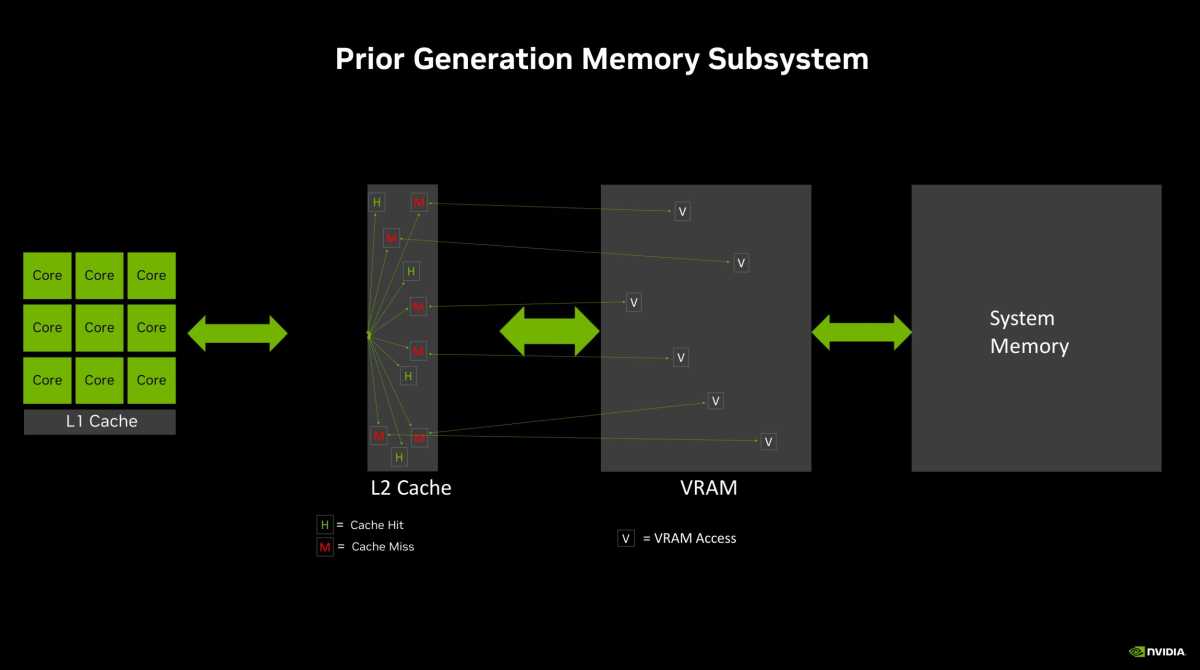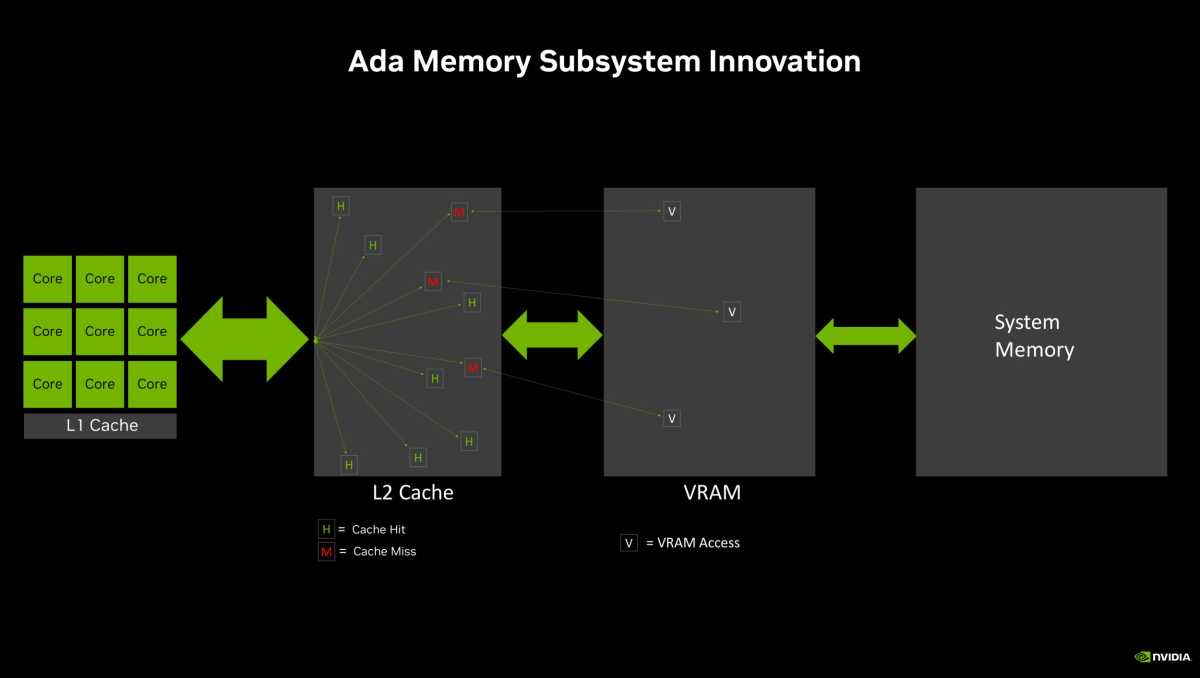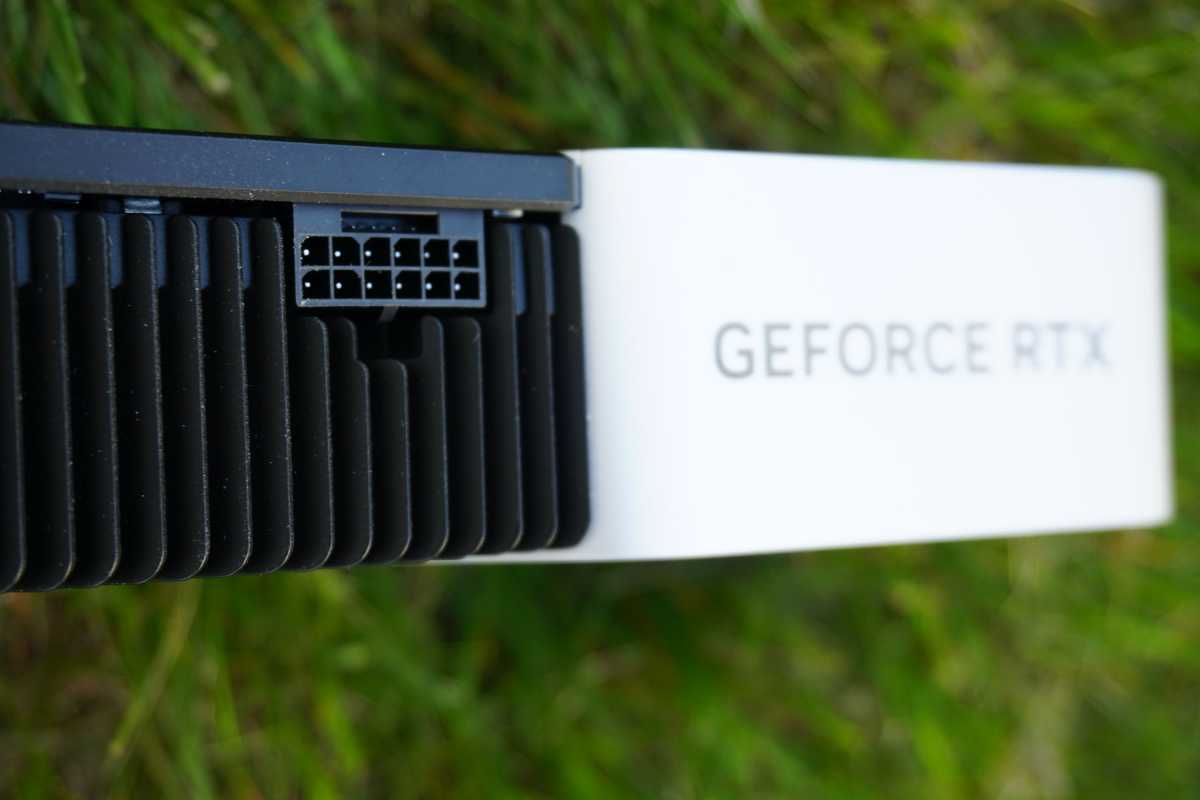Expert's Rating
Pros
- Fast 1080p gaming for high refresh rate monitors
- Killer Nvidia features: DLSS 3, Reflex, RTX Video Super Resolution, Broadcast, and more
- Tremendously power efficient
- AV1 encoding
- Same price as RTX 3060 Ti
Cons
- 8GB of memory
- GPU and memory bus changes make it unappealing for 1440p gaming; may need to reduce settings in some 1080p Ultra games
- DLSS negatively affects image quality at 1080p resolution
- Single-digit, essentially stagnant raw performance upgrade vs. 3060 Ti
- Must use ugly 8-pin to 12VHPWR adapter (included)
- $400 is a ton of money for a 1080p GPU
Our Verdict
The GeForce RTX 4060 Ti 8GB brings Nvidia’s awesome DLSS 3 mainstream, but offers disappointing value as an upgrade to the 3060 Ti and as a standalone 1080p gaming option in 2023. Technical decisions also make it unappealing for 1440p gamers, unlike its predecessor.
At first blush, Nvidia’s $399 GeForce RTX 4060 Ti (8GB) looks like it should be a smashing success.
Its predecessor, 2020’s $399 GeForce RTX 3060 Ti, was one of the best GPUs in a strong RTX 30-series generation, offering impeccable 1080p and spectacular 1440p gaming performance at a reasonable price. The new RTX 4060 Ti sticks to the same price while weaving in Nvidia’s latest killer RTX 40-series features, like DLSS 3, Reflex, RTX Video Super Resolution, best-in-class ray tracing, AV1 encoding, stunning power efficiency, and more.
But peel back the hood and things aren’t quite so clear cut.
Nvidia made technical decisions—reducing core counts and altering the memory subsystem—that allow the GeForce RTX 4060 Ti to scream at 1080p resolution but make it unappealing for 1440p gaming. It also makes the 4060 Ti a mediocre generational upgrade in terms of raw firepower. The decision to outfit this card with 8GB of memory means it won’t be able to run all games with eye candy maxed out even at 1080p, by Nvidia’s own admission. And while the addition of DLSS 3’s AI-generated frames is certainly welcome, image upsampling technologies create noticeable visual artifacts at the less pixel-packed 1080p resolution, rendering DLSS’s performance-boosting advantages less of a factor here.
So I guess the bottom line is: Are you willing to pay $400 for a 1080p graphics card with 8GB of memory in the year of our lord 2023?
What are the Nvidia GeForce RTX 4060 Ti’s specs and price?
Nvidia revealed some high-level details for the GeForce RTX 4060 Ti 8GB in its announcement (which also revealed a $299 RTX 4060 and $499 RTX 4060 Ti 16GB, both coming in July) but didn’t provide deeper technical information. Here that is, compared against the RTX 3060 Ti:

Brad Chacos/IDG
A few key details leap out straight away. First, the RTX 4060 Ti—built upon Nvidia’s new “Ada Lovelace” GPU architecture—is tremendously power efficient and offers much higher GPU and memory clock speeds than before. Bravo, Nvidia.
Second, this new card actually holds significantly fewer CUDA, tensor, and RT cores than the RTX 3060 Ti it replaces. Because of this, the RTX 4060 Ti can actually be slower than its predecessor in some situations, and only offers a middling performance uplift overall. Best-case scenarios top out at around 15 to 20 percent faster than the RTX 3060 Ti, but you’ll see essentially static gen-on-gen performance in many more games and resolutions. It’s a testament to Lovelace that this GPU shows any speed upgrades considering how many fewer CUDA cores it has, especially given the ultra-low power draw, but it’s still deeply meh as a generational upgrade.

Brad Chacos/IDG
Third, Nvidia adjusted the GeForce RTX 4060 Ti’s memory subsystem to more closely mirror AMD’s Radeon Infinity Cache setup, plopping a big L2 cache on-die while nerfing the memory bus width all the way down to 128 bits. (The 3060 Ti has a 256-bit bus.) Nvidia also kept memory capacity identical to its predecessor at 8GB of GDDR6, in an era when modern games can now eat more than that even at 1080p resolution. And when it comes to VRAM capacity, either you have enough or you don’t.
The memory configuration prevents the GeForce RTX 4060 Ti from being a viable High/Ultra 1440p gaming option in the long-term, and even in many situations now. We explained why in our analysis during the RTX 4060 Ti’s initial reveal:
“The memory bus width is being slimmed down, from 256-bit in the RTX 3060 Ti to just 128-bit in the 4060 Ti. Think of it like traffic congestion; if memory requests are cars, the bus width is the size of the road. A hundred cars move much faster on a four-lane highway than a single lane dirt road, and that speed is analogous to the card’s overall memory bandwidth. Ostensibly, the GeForce RTX 4060 Ti offers 288GB per second of overall memory bandwidth, compared to the 3060 Ti’s 448GB/s—a huge gulf.
It’s not that simple though.

An illustrative example of how traditional GPU memory works, without a larger on-die L2 cache.
Nvidia

A comparison image showing how the larger L2 cache in Nvidia’s RTX 40-series (“Ada Lovelace”) GPUs helps result in far fewer calls to traditional memory.
Nvidia
Nvidia swiped a page from AMD’s killer Infinity Cache technology for RTX 40-series offerings, dropping a large on-die cache onto the GPU itself, and the RTX 4060 family is no different. Not only does the closer physical proximity mean this cache is faster, but deploying it also reduces the need to send many requests out to the memory chips arrayed around the GPU itself, as illustrated in the slides above. While AMD’s Infinity Cache uses an L3 cache, Nvidia opted for a 32MB L2 cache instead (versus just 4MB on the 3060 Ti). The company says the larger L2 cache particularly helps improve ray tracing and DLSS performance, and results in the “effective” memory bandwidth shown in the technical specifications slide.
Here’s the thing though: As evidenced in our review of the last-gen Radeon RX 6600 XT, which had 32MB of Infinity Cache and a 128-bit bus, pairing a big on-die cache with a neutered bus width helps the GPU perform exceptionally—both in performance and power—at the display resolution it’s targeted for, but usually results in lower-than-expected results at higher resolutions. Higher resolutions have higher memory needs, which results in fewer successful on-die cache hits. When that happens, the memory requests go out to traditional memory—and the RTX 4060 Ti’s much smaller 128-bit bus might falter when that happens.”
Now that we’ve tested the RTX 4060 Ti, we can confirm that it indeed slows down at the higher 1440p resolution. In fact, it can’t even hang tough at 1440p with the RTX 3070, which cost $500 in 2020. You’d expect a new card to at least rival an older GPU that cost just $100 more than it 2.5 long years ago, but the RTX 4060 Ti fails to clear that low bar.
Nvidia seems to be hitching the 4060 Ti’s star to Lovelace’s power efficiency and the company’s GeForce feature set, which is admittedly killer: DLSS 3, RTX Video Super Resolution, Nvidia Broadcast, cutting-edge AV1 encoding, class-leading ray tracing, Nvidia Reflex, and more are on tap, and they’re all truly excellent.

Brad Chacos/IDG
We’re testing Nvidia’s GeForce RTX 4060 Ti Founders Edition, a manageable two-slot iteration of the company’s tried-and-tried and gorgeous in-house design. It’s more silver than upper-tier models, coming with a single HDMI slot and three DisplayPorts.

Brad Chacos/IDG
One quibble: Despite only requiring a single 8-pin connector for power, Nvidia still outfit the card with a 12VHPWR cable, necessitating the use of a short adapter included in box. It looks awkward and fugly if you’re using a case with a windowed side. The fan blades are also much less densely packed than previous FE models, though it doesn’t affect cooling performance, as you’ll see later on.

Brad Chacos/IDG
Enough chatter. Let’s get to the games!
Our test system
We test graphics cards on an AMD Ryzen 5900X PC used exclusively for benchmarking GPUs. We now test with PCIe Resizable BAR (also known as Smart Access Memory on Ryzen systems) active, as most modern gaming PCs released in the last four years support the performance-boosting feature, either natively or via a motherboard firmware update. Nvidia also recommends turning on the optional “Hardware-accelerated GPU scheduling” in Windows to let the RTX 40-series stretch its legs to the fullest, so we’ve made that tweak as well. Most of the hardware was provided by the manufacturers, but we purchased the storage ourselves.
- AMD Ryzen 5900X, stock settings
- AMD Wraith Max cooler
- MSI Godlike X570 motherboard
- 32GB G.Skill Trident Z Neo DDR4 3800 memory, XMP active
- Corsair HX1500i power supply (and optional $20 12VHPWR 600 cable for Nvidia GPUs)
- 1TB SK Hynix Gold S31 SSD x2
We test a variety of games spanning various engines, genres, vendor sponsorships (Nvidia, AMD, and Intel), and graphics APIs (DirectX 9, 11, DX12, and Vulkan), to try to represent a full range of performance potential. Each game is tested using its in-game benchmark, sanity checked by Nvidia’s FrameView tool, at the highest possible graphics presets unless otherwise noted, with VSync, frame rate caps, real-time ray tracing or DLSS effects, and FreeSync/G-Sync disabled, along with any other vendor-specific technologies like FidelityFX tools or Nvidia Reflex. We’ve also enabled temporal anti-aliasing (TAA) to push these cards to their limits.
We run each benchmark at least three times and list the average result for each test. Outside of esports, we’ve limited our benchmarks to 1440p and 1080p resolutions, as the 4060 Ti truly isn’t built for 4K gaming. We test features like ray tracing and DLSS in a separate section, as upscaling features like DLSS and AMD’s rival FSR tweak the look of games to help them run faster.
Usually we present our data in a series of per-game bar charts, but given some severe time constraints, we’re running our data in raw charts today and supplementing it with additional performance commentary instead. (Hit me up on Twitter to let me know if you love it or hate it!) Those time restrictions also prevented us from running new benchmark data for the $330 16GB Intel Arc A770, alas, which is another strong contender in this price segment.
Nvidia GeForce RTX 4060 Ti 1080p gaming performance
Nvidia itself calls the RTX 4060 Ti “a 1080p performance champ,” so let’s start there.

Right-click and open in new tab to see in full resolution.
Brad Chacos/IDG
All of these graphics cards deliver great 1080p graphics performance with eye candy maxed out, even the last-gen Radeon RX 6600, which can be found hovering around $200 these days. We also included results for the Radeon RX 6700 XT. This AMD GPU features 12GB of VRAM and a 256-bit bus, sidestepping concerns with the RTX 4060 Ti’s memory configuration. It can be found for roughly $350 these days.
The new RTX 4060 Ti generally leads its RTX 3060 Ti predecessor, albeit by a slim to negligible margin in most games, as evidenced by the average FPS shown at the end of the chart.
The one exception? The legendary Counter-Strike: Global Offensive, one of the most-played games on the planet. GeForce RTX 40-series GPUs have consistently failed to beat their predecessors in CSGO, likely due to the much narrower memory bus widths that Nvidia slapped on this generation. If you exclude CSGO and its ultra-high frame rates from the averaged results, the RTX 4060 Ti’s lead widens, hitting 130fps on average versus the RTX 3060 Ti’s 119—still a paltry 9 percent uplift overall.
Nvidia GeForce RTX 4060 Ti 1440p gaming performance
We also tested these cards at 1440p resolution, adding in the $500 RTX 3070 from last generation and the new $599 RTX 4070 for good measure (literally).

Right-click and open in new tab to see in full resolution.
Brad Chacos/IDG
Once again, all these graphics cards turn in a respectable showing, and once again, the new RTX 4060 Ti lands uncomfortably close to its predecessor. Factoring in CSGO’s high frame rates and slower RTX 40-series performance, the 3060 Ti actually holds the lead in the averaged frame rate here. Oof. That’s
Autentifică-te pentru a adăuga comentarii
Alte posturi din acest grup

Arlo announced a refresh of its entire home security camera lineup to


Wyze was an early player in the budget home security camera game, but


As the back-to-school season approaches in 2025, teachers aren’t just

If you’re in the market for a superb laptop with excellent battery li

Turning your house into a smart home might isn’t the dauting task you
